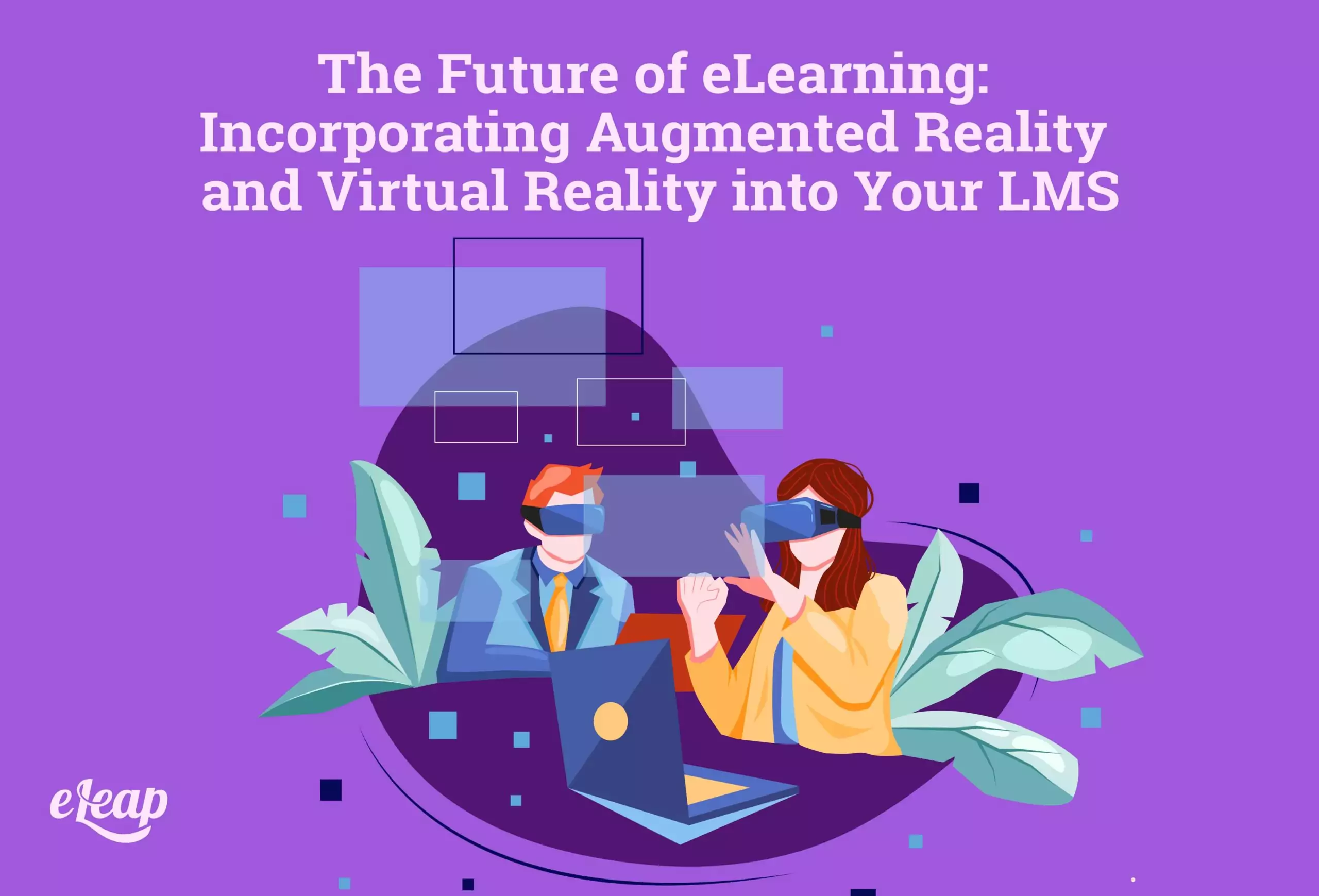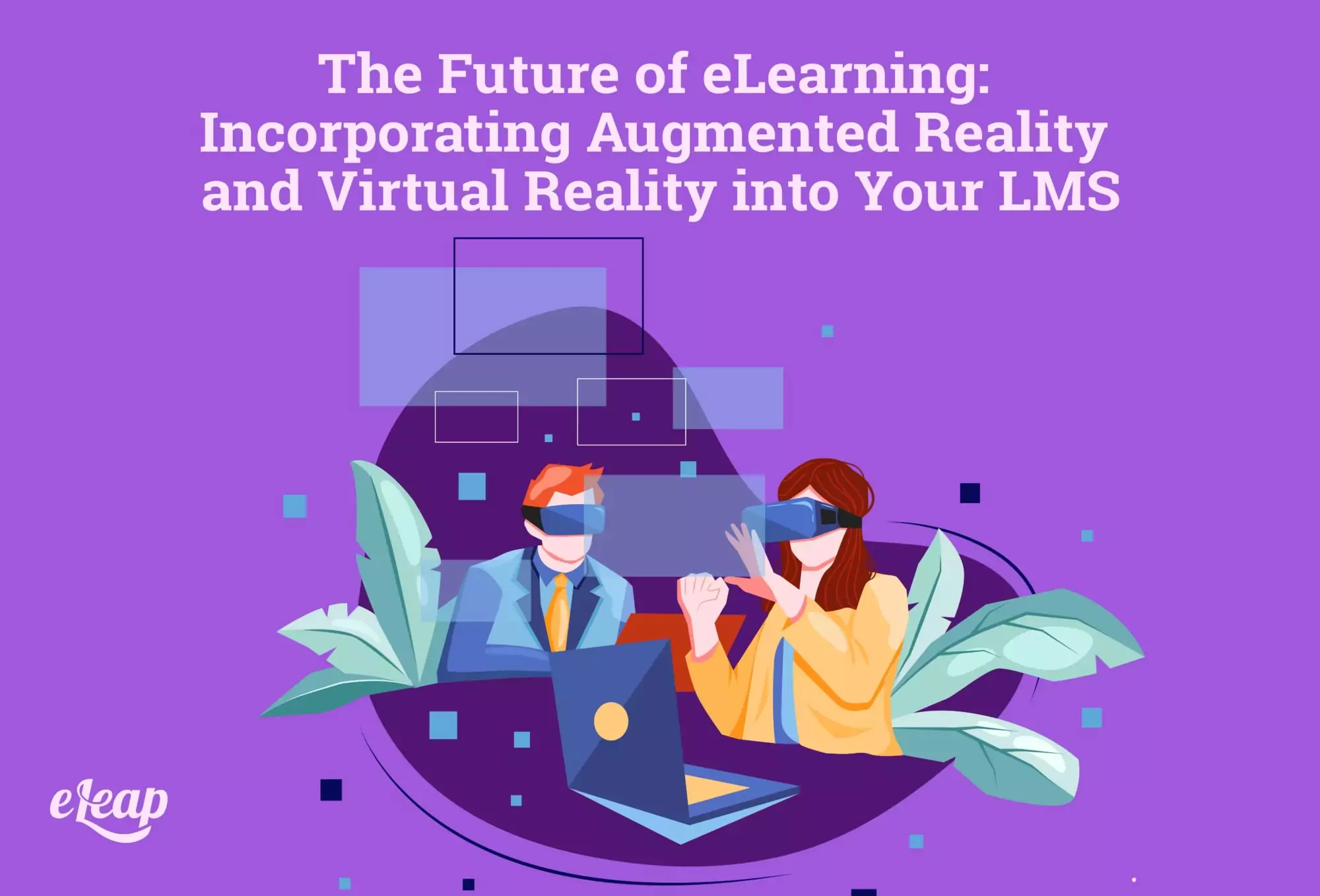The Future of eLearning: Incorporating Augmented Reality and Virtual Reality into Your LMS

The future is embracing technology and changing the way that people live, work, and learn. What used to be a fun way to play games is becoming one of the most valuable corporate training tools on the market today. Virtual reality and augmented reality platforms are helping organizations to improve onboarding, reduce the risks associated with equipment and heavy machinery training, improve product service training, and even provide sound and safe training for employees on things related to safety and workplace best practices.
No one wants to sit through a day-long training and compliance session that rattles on with details about compliance rules, guidelines, and other things that are hard to understand, let alone remember. Instead, utilizing AR will allow companies to deliver the exact training and knowledge that the employee needs in a whole new way. Even if you’re hiring and training one person at a time, you can use AR and VR to insert them into a “training class” so that they get the group experience that they need.
There’s so much that AR is doing for the eLearning world, and it’s going to change a lot of industries out there when it’s all said and done, too.

How AR is Changing eLearning
AR is not the same as virtual reality and vice versa. They each have their own approach, although their end goal of changing your perception of reality is the same. And now, there are also mixed reality products out there. It can be hard to keep up for the average person, but the important thing to know is what each entails and why AR is coming out on top.
Virtual reality offers a fully immersive experience that shuts off the entire outside world. This allows the person to be immersed in the virtual world entirely and not have any idea what’s going on in the “real world” around them. This allows them to get a real-world experience without having to actually be physically present and is totally disconnecting people from reality.
Augmented reality, on the other hand, is when digital or virtual elements are superimposed into the real world on transparent screens, such as in the case of heads-up displays. These devices are more compact, and they can even be made in the form of regular glasses. They can also be used with mobile devices and will deliver a whole new solution for employee training and learning that changes the way people comprehend things and interact with the world around them.
Then, there’s mixed reality, which is an advanced process that mixes virtual and augmented reality to create a much deeper, more unique interaction. These platforms can even use eye-tracking and gesture-tracking to ensure that maximum user interaction is achieved. In any case, everyone has their favorite form, and it’s usually going to be augmented reality because it doesn’t block out sight completely.
AR can be used for:
- New hires and onboarding
- Heavy equipment training
- Product service training
- Safety training
It can be used for other types of training and development in the eLearning realm of business, too, but these are the most common applications.
Medicine, Engineering, and More
When modern eLearning platforms are engaged, better training and education tools will create more informed, skilled workers in fields where they are most needed. In the medical field, imitation is a great way to train people without putting them in dangerous situations or requiring a real-life situation where they will practice. AR glasses, for example, can help with learning surgical skills and other procedures. Some companies are also working on AR smart glasses that will help deliver real-time information on the go with just a pair of glasses.
AR training is also used in engineering to help students identify complicated parts or complex structures. It also allows people to get a greater understanding of how mechanics work and develop prototypes virtually instead of physically to reduce costs. There are also endless training opportunities that will utilize AR and VR to create a safer, more efficient learning and working environment for engineers and those who work around them.
And, of course, the future is also looking at AR for teaching and education—that’s where eLearning comes in. It’s believed that this will allow teachers and tutors to better explain lessons and educate people by providing real-world objects and practices in an augmented reality environment, such as smartphone apps for AR that can teach students about objects by simply hovering over them.
AR is revolutionizing the education industry, both in traditional education and beyond the classroom, into corporate training and organizational eLearning, in several capacities. We have merely just begun, but the future is bright for virtual and augmented reality as tools for corporate training and eLearning.
Restoring the Ties That Bind
While many people don’t exactly enjoy going to work, the “going” part used to be where the hang-up occurred. Today, however, we live in a post-pandemic world where many people are longing for the reconnection and restoration of that in-person connection in the office. As companies embrace tools like AR and VR for training and eLearning, there’s a chance to recreate that connection and offer people a whole new way of interacting with their team.
A modern LMS should include augmented reality and other AI features to ensure that it is delivering the best learning experiences possible. When you use AR and VR for your eLearning, you offer a more immersive environment and even give users more realistic gamification of their training and eLearning courses. AR-based assessments and testing are also available to provide visual feedback to people, which can further enhance their learning capabilities. And of course, having advanced analytics will ensure that you can learn more about your team and how they learn and perform best so that you can implement the best practices for your organization.
Although it’s still a new endeavor and it’s not exactly cheap, utilizing AR and VR is an investment worth making for any organization that wants to improve its eLearning experience.